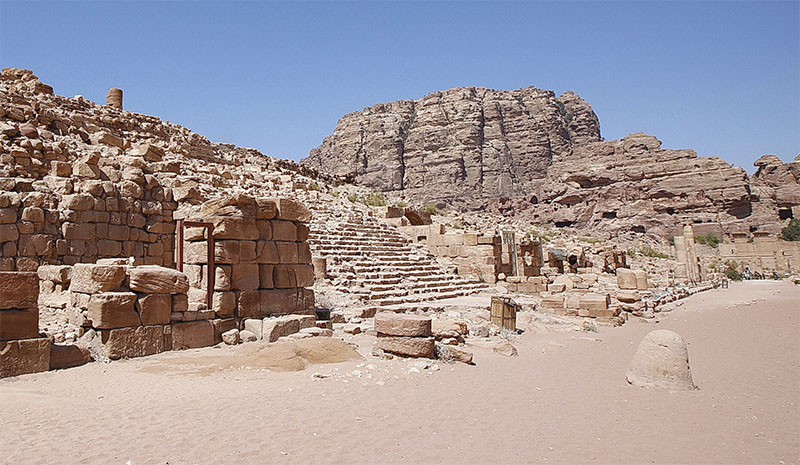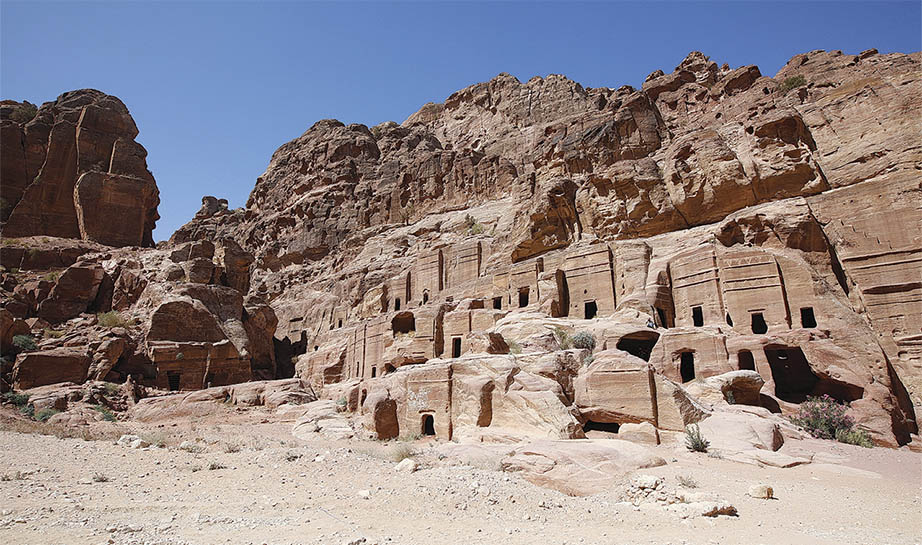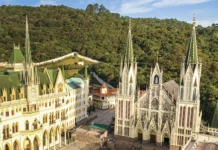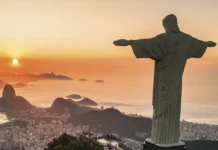Elusive and intriguing as a Bedouin’s eyes, Petra seems to guard, behind the silent stone of its façades, the secret of the true identity of the three Magi.
Southeast of the Dead Sea, the fascinating ruins of a city carved in stone can still be seen today, which for centuries remained hidden in the inhospitable desert of Edom. To reach it, one has to walk along a narrow gorge twelve hundred metres in length, winding between rocky walls which reach, at certain points, up to one hundred and eighty metres in height.
I am referring to Petra, a city built by the Nabataeans, a people who disappeared in the parched sands of the Middle East as mysteriously as they had appeared, like silk swept away by the desert wind or the fragrance of incense emanating from the tale of A Thousand and One Nights.
While the Romans built practical roads, forcing the people they dominated to passively conform to the established routes, the Nabataeans guided their steps by following the movement of the stars.
Skilful navigators on the seas of sand, they had an unparalleled capacity to transport gold, frankincense and myrrh as merchandise, to export them to distant lands such as Syria, Egypt, Persia, Turkey and Rome. Their camels of prodigious stamina and a secret ability to store water, coupled with their skill in guiding themselves by the constellations, made it possible for them to establish the so-called Incense Route, which linked the port of Gaza with the Gulf of Aden and the mythical mines of Sheba across two thousand four hundred kilometres of desert.
Over the centuries, this nomadic people came to control a vast territory. Thanks to their ingenious irrigation systems, which still amaze scholars today, they were able to build the magnificent Petra, whose grandeur endures to this day.
However, it is not only owing to the silent witness of centuries-old ruins that the culture of the Nabataeans attracts the attention of scholars, but to an even more enigmatic and fascinating relationship: with the Magi.
Did they pass through Petra along their interminable journey? It is very likely that they did, for it is not without reason that the prophet Isaiah says: “A multitude of camels shall cover you, the young camels of Midian and Ephah; all those from Sheba shall come. They shall bring gold and frankincense, and shall proclaim the praise of the Lord” (60:6). And elsewhere: “They have sent lambs to the ruler of the land, from Sela” – which many scholars identify with Petra – “by way of the desert, to the mount of the daughter of Zion” (16:1).
Delving even further into this connection, some authors affirm that the Wise Men were, in fact, Nabataean priests who united the knowledge of the Persians with physical and spiritual proximity to the chosen people.1
What is the answer to this intriguing enigma?
Whatever it may be, neither the torrential rains of winter nor the torrid desert winds have yet succeeded in effacing Petra’s majesty, elusive and intriguing as a Bedouin’s eyes. Behind the silent stone of its façades seems to dwell the secret of the true identity of the Magi, those wise men, astronomers and mystics who, guided by a star, arrived one day in Judea to worship the Infant God.
And as archaeologists and academics uncover new traces of its centuries-old past, the magnificence of this city can perhaps be summed up by a phrase, made up of words that are simple but rich in scope: Petra, where the Magi once trod… ◊
Notes
1 Cf. LONGENECKER, Dwight. Mystery of the Magi: The Quest to Identify the Three Wise Men. Washington DC: Regnery History, 2017.













